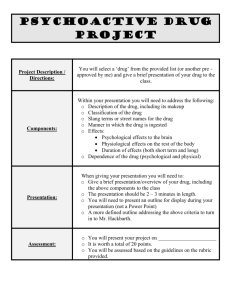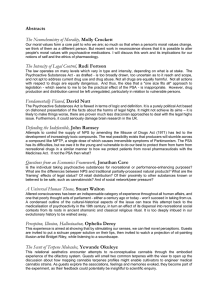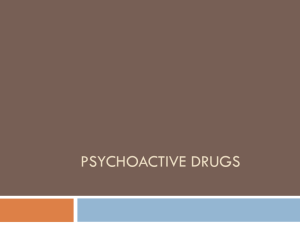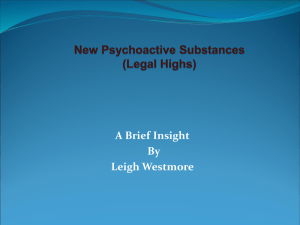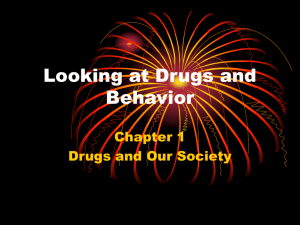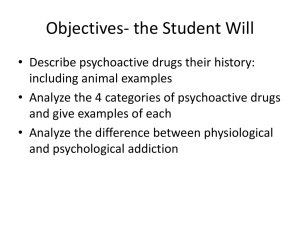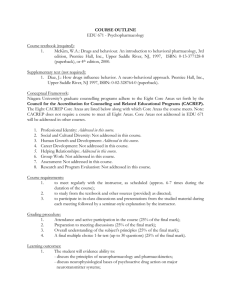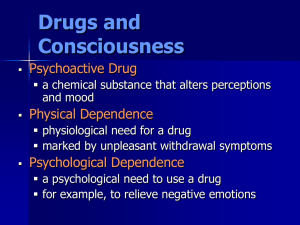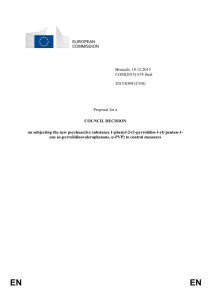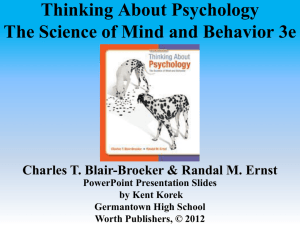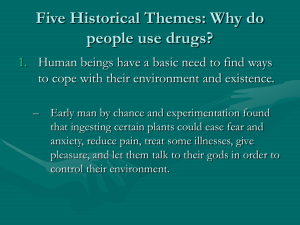Psychoactive Drugs and Neurochemistry
advertisement
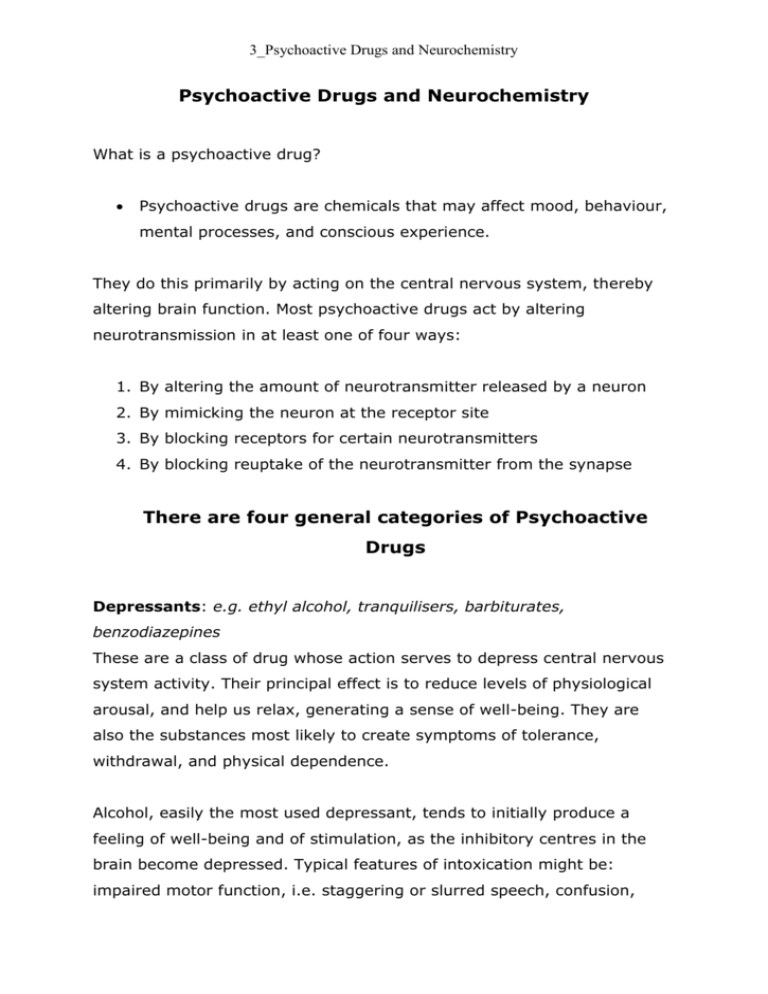
3_Psychoactive Drugs and Neurochemistry Psychoactive Drugs and Neurochemistry What is a psychoactive drug? Psychoactive drugs are chemicals that may affect mood, behaviour, mental processes, and conscious experience. They do this primarily by acting on the central nervous system, thereby altering brain function. Most psychoactive drugs act by altering neurotransmission in at least one of four ways: 1. By altering the amount of neurotransmitter released by a neuron 2. By mimicking the neuron at the receptor site 3. By blocking receptors for certain neurotransmitters 4. By blocking reuptake of the neurotransmitter from the synapse There are four general categories of Psychoactive Drugs Depressants: e.g. ethyl alcohol, tranquilisers, barbiturates, benzodiazepines These are a class of drug whose action serves to depress central nervous system activity. Their principal effect is to reduce levels of physiological arousal, and help us relax, generating a sense of well-being. They are also the substances most likely to create symptoms of tolerance, withdrawal, and physical dependence. Alcohol, easily the most used depressant, tends to initially produce a feeling of well-being and of stimulation, as the inhibitory centres in the brain become depressed. Typical features of intoxication might be: impaired motor function, i.e. staggering or slurred speech, confusion, 3_Psychoactive Drugs and Neurochemistry slower reaction time, impaired executive decision making, and possibly impaired vision and hearing. Stimulants: e.g. nicotine, caffeine, amphetamine, cocaine: These are the most commonly consumed psychoactive substances, and their effect is to increase behavioural activity, engendering a sense of alertness and energy Narcotic opiates: opium, morphine, heroin, codeine: This is a class of drugs distinguished by their sleep-inducing and pain-relieving, or analgesic, effects. The effects of narcotic opiates on consciousness are complex. Drowsy, cloudy, feelings occur because opiates depress the activity of parts of the cerebral cortex. But they also produce excitation in other parts, leading users to experience a sense of euphoria. The term opioid refers not only to naturally occurring narcotics, but also to synthetic variations such as methadone or pethidine. (Barlow, 2005, p307) Psychedelics and Hallucinogens: e.g. marijuana, LSD, psilocybin, PCP, mescaline, Magic MushroomsThese alter consciousness by dramatically changing emotions, perceptions, and cognitions; sight, sound, feelings, and taste will be distorted. The risk of developing either a physical or psychological dependence on these substances is considered to be low Classification of Psychoactive Substances Psychoactive drugs are usually classified in terms of their function: Their effect on the nervous system Intended therapeutic use Origin Chemistry 3_Psychoactive Drugs and Neurochemistry Classification in terms of function (and legal status) permits a multidimensional approach to the definition of any given mood-altering substance. Heroin, for example, would be classified as follows: 1. Legal status: Illicit 2. Effect on central nervous system: Depressant 3. Therapeutic Use: Analgesic/ Euphoriate/ Antidiarrhoeal 4. Origin: Opiate 5. Chemistry: Opiate
